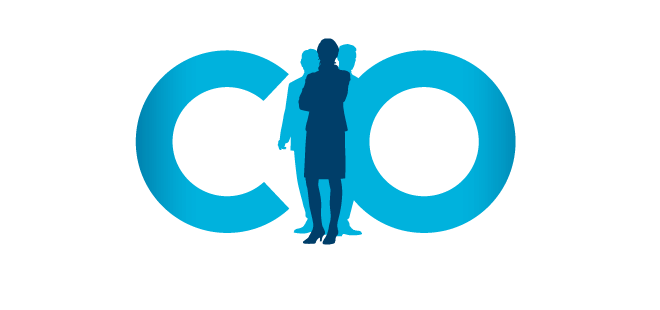CIO Perspective: Be Careful With These Traps
I personally believe that CIO’s position in the company is more difficult than any other CxOs. There are many things that can go wrong, some implementations may be unaccepted enterprise-wide and sudden shifts in IT can change the direction of many things in a couple of months. Since many CIOs come from the IT background, they have the tendency to roll up the sleeves to make everything “right” according to the “best practices.” Before doing that, let’s see some traps that are on the way.
First, the CIOs have a natural tendency to engage in the finest details of technology (because how things work itch their instinctive curiosity). But the role of the job requires the CIO to engage with the technology in a strategic level. The finer details are for the staff. CIO is not there to implement VDI on the new Windows Server release, he is there to decide whether VDI is a right way for the business or not.
Another similar trap for the CIO is “returning to the field” and being too controlling. Some CIOs want to “return to the field” to the point of micromanaging their managers rather than properly monitoring them and giving them the support they need. CIOs need to ensure that the work is on track, not to step in and do things. Similarly, IT people tend to be a little bit more controlling than many other professions. This trait can work very easily against the CIO, especially if he personally worked on similar projects during his career (which is often the case). The CIO should not fall into the trap of controlling everything in the project. He should rather develop managers who can drive the projects to success and establish sound relationships with the stakeholders (partners, customers, end users, other managers etc.).
RELATED: HealthCare.gov the Second Time Around: Will the Website Handle the Traffic This Time?
Just on the very opposite side, there are the ivory-tower CIOs. They tend to stay in the office and follow status reports of the projects. As long as the paperwork is correct, they think that everything is fine. Believing the status reports blindly is one of the gravest mistakes. CIO has to leave his ivory tower, speak with the managers, the stakeholders and make observations on his own. Just by walking around and having a coffee or lunch will make him uncover many issues in advance before they show up in the status reports.
Many of the ivory-tower CIOs tend to be good with everybody with everything. CIOs are expected both to support the projects that are positive for the enterprise and the staff and pull the plug when opposite happens. There are times when there are needs to reshuffle staff, reshuffle/stop/cancel/postpone projects and fire people. Sometimes this is the responsibility of a manager to do this but sometimes the responsibility falls on the CIO. The CIO has to show when he should be taking the lead. Avoiding such “unpleasant” works and leaving them to someone else to take the blame seriously undermines people’s faith in the CIO.
Some CIOs are so back-end oriented that they miss the point on the end user experience. As a support engineer, I cannot say that the technical elements, the applications and the infrastructure is less important: of course there are the databases, operating systems, networks, performance issues and so on going in the datacenter. Excelling on all these tech elements does not guarantee the success of the application. If the end-user experience is not properly thought of, the CIO has to expect an enterprise-wide resistance on the product. In order to overcome the situation, the CIO has to think about the end user experience from the beginning and consider asking his skilled/experienced people to work with the users on the user experience design.
RELATED: CIO Perspective: Make Sure Your Disaster Recovery Plans Are Complete
Taking one step forward, excellence on the technical elements and the user interface still does not say anything about the quality of the application. Failing the take into account the quality assurance (QA) in the project timeline can have serious repercussions. The QA should be structured through the project steps and should cover unit testing, stress testing, integration testing, end user testing and regression testing at the minimum. The QA should also be carried out by the key employees in the departments on scenarios. Allocating proper time in the QA procedures ensures that the things will work as they should be in the first time.
CIOs, due to the nature of their business, tend to form brand loyalties with the tried and proven vendors known in the business for years. There is no problem in that and I believe the CIO has to be encouraged to work with sound partners. The problem starts when this loyalty turns to blindness and the CIO can no longer evaluate the new solutions/vendors that can introduce real value to the business.
RELATED: CIO Perspective: How to Improve the ROI of Your Software
Some CIOs fail to understand the importance of the company politics thinking that having everything working together is the ultimate key to success. Throughout the projects, it is important to work with company politics and influencers, and aim to get their support. IT people depend on the CIO to understand the climate and direct the people to the right targets in order to have them succeed in their projects.
Finally, the CIO should not forget that the people working in his department are all his colleagues, working for the same target, the competitive edge of the enterprise. The CIO has to visit reward and promotion structures and make sure that they are up to date with the current IT requirements. It is not enough anymore just to match SLA and performance. Today, the IT has to be customer-centric. There are people working on training, in the call center, on user experience, on quality assurance, which require having different metrics on performance evaluation. If people feel that their performance is not properly measured and there are no advancement opportunities – for the salary or for the career – then they will either leave or choose to jump to other high-reward areas. CIOs job is to keep his valuable colleagues in the enterprise.




